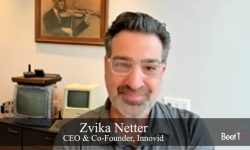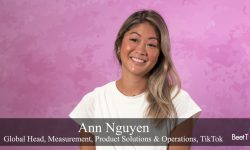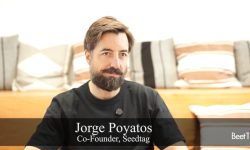PALO ALTO – Connected TV is booming, offering advertisers powers like household targeting, geo-targeting frequency-capping.
But, where automated systems book the ads, there is also a risk of creative ending up in undesirable positions.
That is why ad server vendors like Publica are working to introduce optimizations.
In this video interview with Beet.TV, Ben Antier, Co-Founder, Chief Product and Operations Officer, Publica, explains three ways ad buyers need greater control over connected TV ad placement.
How can CTV publishers grow their advertising revenues?
Join our webinar with @Philo & @IndexExchange where we will be discussing the evolution of the OTT ad break & the controls now available to streaming publishers.
Register via https://t.co/PJu82xzwLF #CTV #OTT #Streaming pic.twitter.com/oC3MASPFsl
— Publica by IAS (@getpublica) November 6, 2020
1. Ad break
“The biggest challenge is the ad break,” Antier says. Most of the technology that exists today was not built for it.
“I don’t want to see the same ad multiple times. I also don’t want to see four car commercials back to back. That’s neither good for the user nor for the advertisers.
“If your ad server wasn’t built with those use cases in mind, it’s sometimes very difficult to achieve, which is why – still, to this day – you see some of the largest programmers, the largest publishers in our industry, they’re delivering back-to-back ads, or different car commercials, but in the same ad break.”
2. Viewing session
“The next level, which is a bit more advanced is looking at the session as a whole,” Antier says. “You also don’t want to show the same Toyota ad 10 times within a game or within a TV show, for example.
“At that point, you have to think of, ‘How do I optimise my session, and how do I deliver the highest-yielding ads in the place, in my show, or in my game where it’s going to yield the most revenue and ultimately have the highest impact for my advertiser?’
“Today, we’re able to say, ‘Well, even in a live stream, this is the third ad break that this user gets to. They’ve already seen X amount of car ads. They’ve already seen these advertisers’.”
3. Ad Optimization
“A level beyond advanced, which I think I would call the ‘God mode of ad optimization’, is to be able to combine everything that the AI does, everything that we do in the backend to optimize for ad delivery, for price, for user experience, with business strategies,” Antier continues.
“You’re going to want to be able to say, ‘Okay, if I have a user that joins my stream past half-time, for example, so they’ve missed the bulk of the ad inventory and where the highest yielding ads are delivered, I still want to be able to target them with that high CPM campaign, even if it’s in the third quarter, for example’.
“And so that’s the kind of things that we always work on, and frankly, we’re still working on every single day, to mix how do the algorithms work with how do the business strategies work, and try to bring those two together in the most efficient way.”
Getting ahead
Publica is a four-year-old connected TV ad-serving company that has grown to over 20 employees in LA, New York, London and Paris.
It employs server-side ad insertion, as oppose to playing out ads from client devices themselves.
It built its technology with header bidding from the start. That is the technology that lets publishers entertain bids from multiple demand sources simultaneously, rather than in a “waterfall” fashion, thereby reaping a better yield from a larger auction.
It also unifies bidding via direct sales and programmatic sources.














































